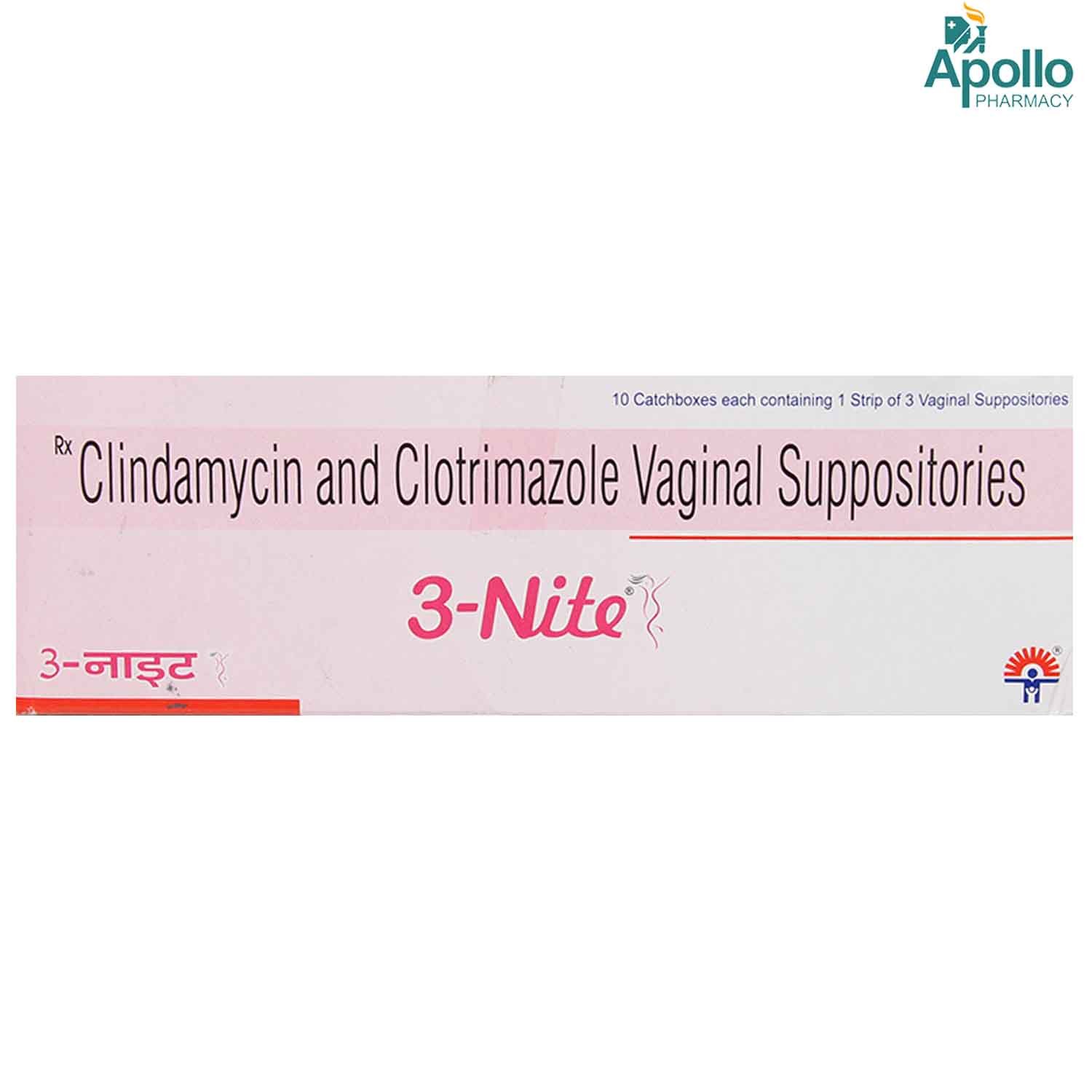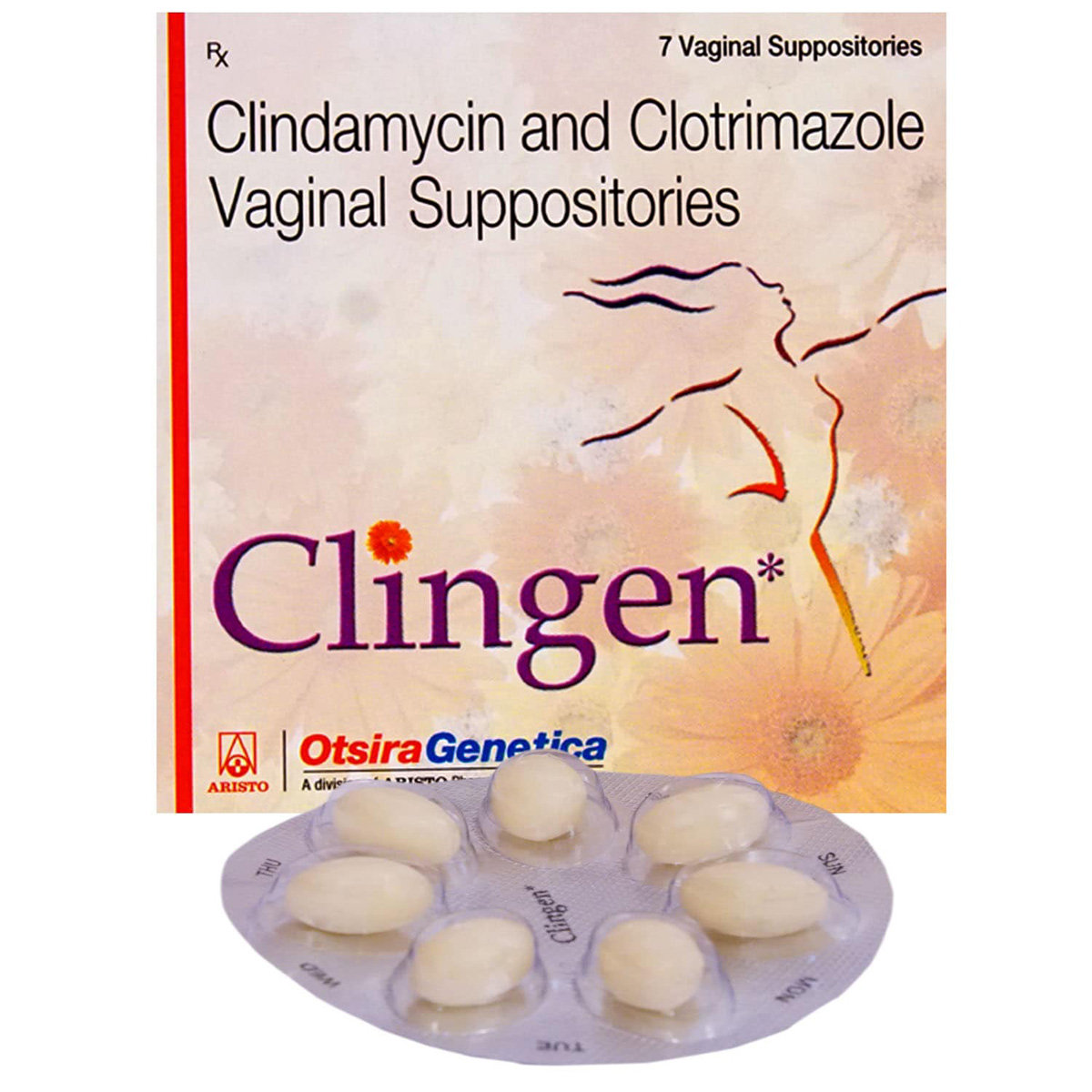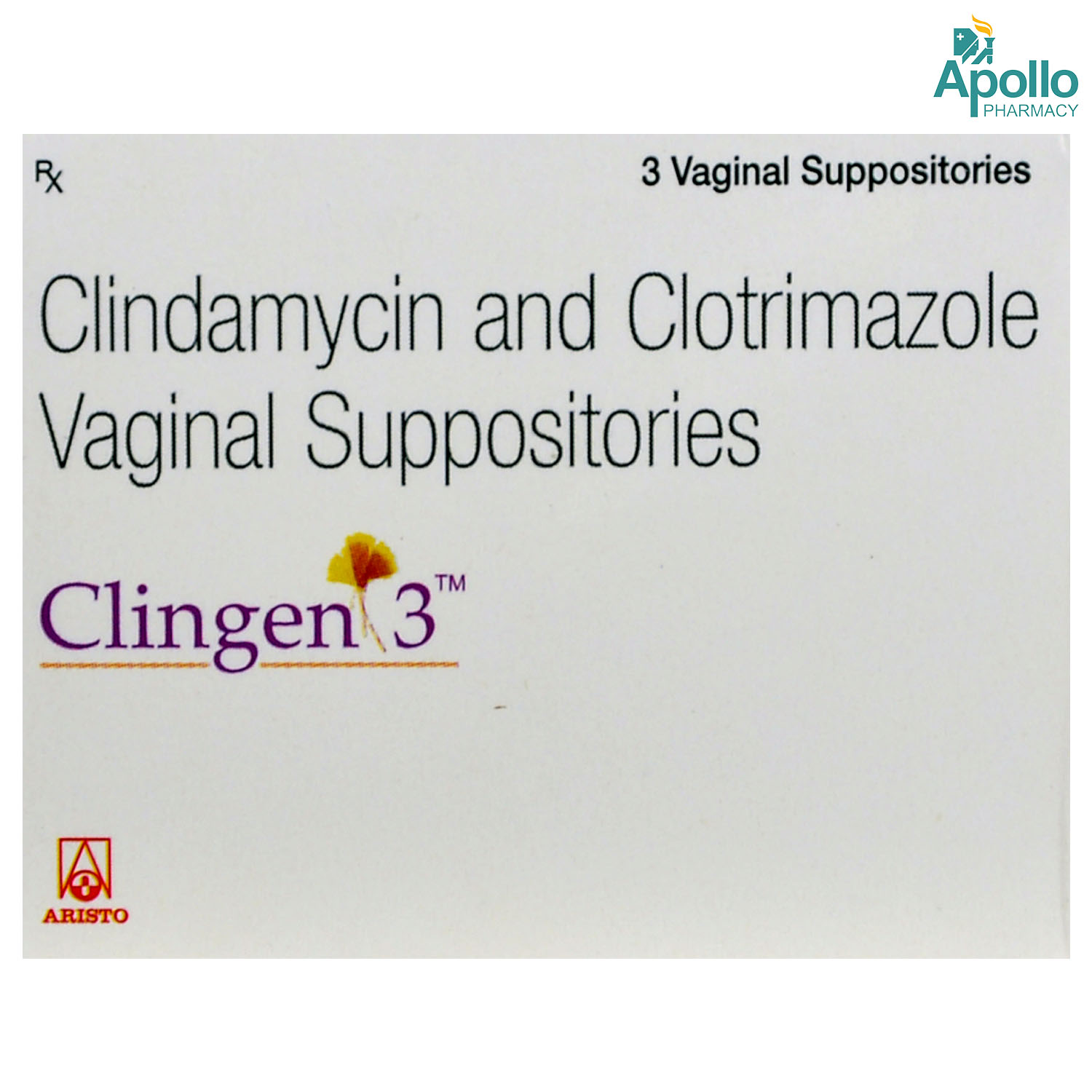Clindamycin+clotrimazole
About Clindamycin+clotrimazole
Clindamycin+clotrimazole belongs to the class of medications called 'topical antibiotics' primarily used to treat vaginal infections, caused by bacteria (bacterial vaginosis), yeast infection (candidiasis) and parasitic infections (trichomoniasis). Bacterial vaginosis is caused by the change in the normal balance of vaginal bacteria. Vaginal yeast infection or Candidiasis is the infection of the vagina and tissues at the opening of the vagina (vulva). Trichomoniasis is a sexually transmitted infection caused by a parasite. Symptoms of a vaginal infection include itching, odour and abnormal heavy white discharge from the vagina.
Clindamycin+clotrimazole comprises two medicines, namely: 'Clindamycin' (antibiotic) and 'Clotrimazole' (antifungal). Clindamycin belongs to lincomycin antibiotic group that works by inhibiting bacterial protein synthesis, required for the survival of the bacteria. As a result, it inhibits bacterial growth but does not kill them (bacteriostatic effect). On the other hand, Clotrimazole belongs to imidazoles antifungal group that kills fungi by causing holes in its cell membrane, thereby leaking all content out.
Use Clindamycin+clotrimazole as suggested by your doctor. Common side effects of Clindamycin+clotrimazole include burning sensation, irritation and itching. These side effects may not occur in every patient using this medication and differ individually. If the side effects persist longer or worsen, please seek a doctor's advice.
Inform your doctor if you are allergic to Clindamycin+clotrimazole or any of its components. Let your doctor know if have any liver, kidney and gastrointestinal diseases (diarrhoea and colitis, an inflammation of the colon), allergic conditions (asthma, hay fever, eczema), diabetes and immune system problems (HIV-AIDS). Clotrimazole in Clindamycin+clotrimazole may weaken rubber products' activities of contraceptive devices, latex condoms, diaphragms and cervical caps. Pregnant and breastfeeding women should consult a doctor before using Clindamycin+clotrimazole.
Uses of Clindamycin+clotrimazole
Medicinal Benefits
Clindamycin+clotrimazole is used to treat vaginal infections like bacterial vaginosis (BV), candidiasis, and trichomoniasis. It comprises two medicines: 'Clindamycin' (antibiotic) and 'Clotrimazole' (antifungal). Clindamycin is an antibiotic drug and works by inhibiting bacterial protein synthesis, which inhibits bacterial growth. It shows a bacteriostatic effect, which stops bacterial reproduction. Clotrimazole is an imidazole antifungal medication that stops the growth of fungi by causing damage and leakage to the fungal cell membrane. Together Clindamycin+clotrimazole treats vaginal infections caused by bacteria, yeast and parasites preventing white discharge, itchiness and inflammation in the genitourinary area.
Directions for Use
Storage
Side Effects of Clindamycin+clotrimazole
- Burning sensation
- Irritation
- Itching
Drug Warnings
Please inform your doctor if you use any prescription, non-prescription medicines, including vitamin and herbal supplements before using Clindamycin+clotrimazole. Do not use Clindamycin+clotrimazole if you are allergic to Clindamycin+clotrimazole or any of its components. Let your doctor know if have any liver, kidney and gastrointestinal diseases (diarrhoea and colitis, an inflammation of the colon), allergic conditions (asthma, hay fever, eczema), diabetes and immune system problems (HIV-AIDS). It is advised to use Clindamycin+clotrimazole under your doctor's supervision if you use other azole antifungal medicines. Clotrimazole and mineral oil additive in Clindamycin+clotrimazole may weaken rubber product's activity (such as latex condoms, diaphragms, cervical caps).
Drug Interactions
Drug-Drug Interaction: Clindamycin+clotrimazole may interact with anaesthetic agents/skeletal muscle relaxants (atracurium, cisatracurium, doxacurium, mivacurium, pancuronium, pipecuronium, rapacuronium, rocuronium, vecuronium, succinylcholine, tubocurarine, and metocurine) and respiratory drugs (budesonide, formoterol).
Drug-Food Interaction: No interaction found/established.
Drug-Disease Interaction: Before using Clindamycin+clotrimazole, let your doctor know if have any liver, kidney, and gastrointestinal diseases (diarrhoea and colitis, an inflammation of the colon), allergic conditions (asthma, hay fever, eczema), diabetes, and immune system problems (HIV-AIDS).
Drug-Drug Interactions Checker List:
Safety Advice

Alcohol
safe if prescribedNo interaction found/established.

Pregnancy
cautionThere are limited studies on how Clindamycin+clotrimazole affects the unborn baby during pregnancy. It is advised to use Clindamycin+clotrimazole after consulting your doctor.

Breast Feeding
safe if prescribedThere is limited data on how Clindamycin+clotrimazole affects breastfeeding infants. However, systemic absorption of Clindamycin+clotrimazole is negligible after topical and vaginal administration. Consult your doctor for further advice.

Driving
safe if prescribedNo interaction found/established.

Liver
cautionLet your doctor know if you have any history of liver diseases before using Clindamycin+clotrimazole.

Kidney
cautionLet your doctor know if you have any history of kidney diseases before using Clindamycin+clotrimazole.

Children
unsafeClindamycin+clotrimazole is not recommended for children below 12 years of age. Do not give this medicine to your child without medical advice.
Habit Forming
Diet & Lifestyle Advise
- Avoid frequent douching to maintain the natural moisture in the vagina.
- Use mild soap while taking baths and prefer warm baths.
- Avoid harsh products on your skin.
- Manage stress, eat healthily, drink plenty of water, exercise regularly and get plenty of sleep.
- Avoid or limit the intake of alcohol and caffeine.
-
Wear under cotton underwear and pantyhose with cotton crotch which helps to prevent vaginal inflammation and irritation.
Special Advise
- Ask your partner to use condoms during sexual intercourse, which will help to prevent the further spread of sexually transmitted infections like gonorrhoea if exists presently.
- Proper hygiene and regular cleaning/washing of the genitourinary area with anti-infective wash is advisable.
Patients Concern
Disease/Condition Glossary
Vaginal infection: It also referred to as ‘Vaginitis’ that can cause infection or inflammation of the vagina or external part of the vagina known as the vulva. Vaginal infections are generally caused due to bacteria, yeast and parasites. White thick heavy discharge, foul odour, intense itchiness around the genitourinary area are the main characteristics of the vaginal infections.
Vaginal bacterial infection: It causes greyish-white or yellow discharge with a fish-like odour that can be observed after sexual intercourse.
Vaginal yeast infection: It usually produces intense itching with sometimes white viscous discharge.
Vaginal Trichomoniasis: It is a parasitic infection that produces intense vaginal itching with a foul odour. Vaginal discharge colour is usually greenish-yellow.
FAQs
Clindamycin+clotrimazole is used to treat vaginal infections, such as bacterial vaginosis (BV), candidiasis and trichomoniasis. It consists of 'Clindamycin' (antibiotic) and 'Clotrimazole' (antifungal). Clindamycin is an antibiotic drug and works by inhibiting bacterial protein synthesis, which inhibits bacterial growth. Clotrimazole is an antifungal medication and stops fungi's growth by causing damage and leakage to the fungal cell membrane.
Clindamycin+clotrimazole should be used with proper caution and doctor consultation if you have any liver, kidney and gastrointestinal diseases (diarrhoea and colitis, an inflammation of the colon), allergic conditions (asthma, hay fever, eczema), diabetes and immune system problems (HIV-AIDS).
Do not stop using Clindamycin+clotrimazole even if you feel better until the doctor's advised course is finished. Your symptoms may improve before the infection is completely cured.
Keep Clindamycin+clotrimazole away from direct sunlight. Dispose of unused medicine and keep it out of sight and reach from children and pets.
Bacterial infections, yeast infections, parasitic infections, vaginal atrophy after menopause and irritants like body wash/soap/perfumes/vaginal contraceptives devices are some of the common causes of vaginal infections.
Your doctor might ask you a few questions about your sexual health like your history of past vaginal infections or if you have had any sexually transmitted infections (STIs) like gonorrhoea. Besides this, your doctor might also perform a pelvic exam by collecting vaginal discharge sample.










